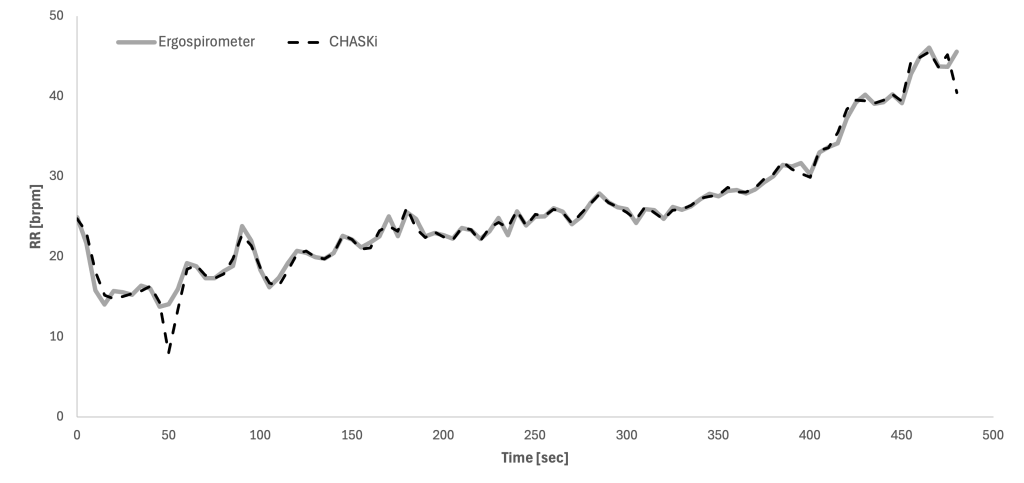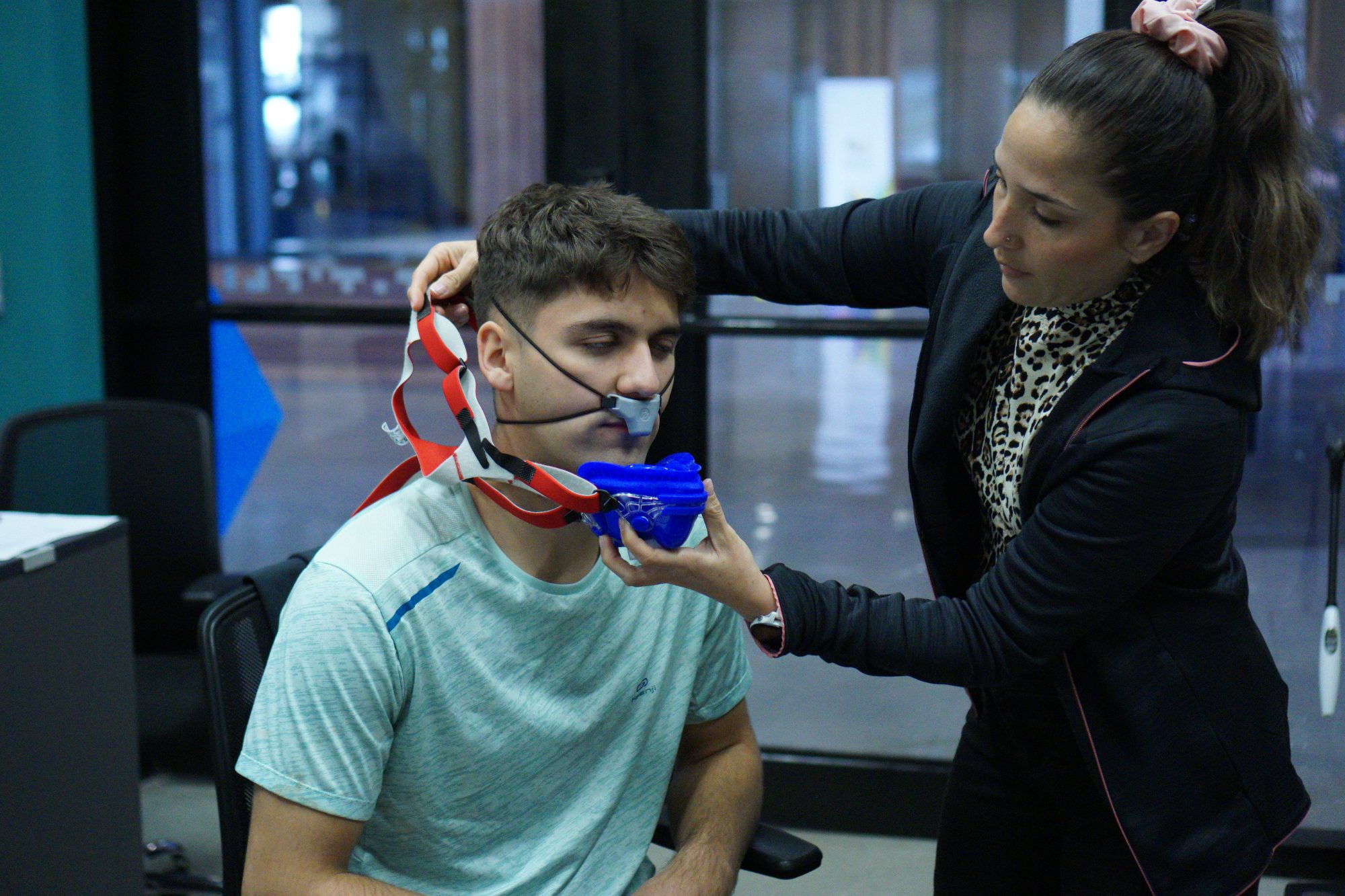Revolutionizing Performance Monitoring with CHASKi
For endurance athletes, understanding ventilatory thresholds (VT1 and VT2) is crucial for optimizing training and maximizing performance. Traditionally, these thresholds are measured using ergospirometry—an accurate but cumbersome lab-based method. Now, with CHASKi, you can access the same gold-standard data in the field. But how well does it stack up against ergospirometry? A recent validation study put CHASKi to the test.
Study Overview: CHASKi vs. Ergospirometry
In this pilot study a group of 11 endurance-trained participants (4 women and 7 men), underwent maximal treadmill tests while wearing both CHASKi and an ergospirometry mask.

The study aimed to determine how accurately CHASKi could detect VT1 and VT2 compared to the gold standard lab measurements. Using Bland-Altman analysis and Pearson correlation, researchers assessed the agreement between the two methods.
Key Findings: Precision Meets Portability
The data analysis was blinded, the ergospirometer data were analyzed by an external expert physiologist and the CHASKi data were analyzed by our team.
The results showed strong concordance between CHASKi and ergospirometry:
- VT1 Detection: Mean bias of -1.1 BPM, with a precision of ±3.8 BPM and a correlation coefficient of r=0.83.
- VT2 Detection: Mean bias of 2.2 BPM, with a precision of ±3.8 BPM and a correlation coefficient of r=0.85.
These findings confirm CHASKi’s ability to deliver accurate ventilatory threshold data with a small margin of error—well within clinically accepted ranges.
Why This Matters for Athletes and Coaches
CHASKi offers several advantages over traditional ergospirometry:
- Real-World Usability – Unlike lab-based methods, CHASKi enables real-time monitoring in natural training environments.
- Non-Invasive & Portable – No bulky masks or lab visits; just a lightweight device that seamlessly integrates into workouts.
- Data-Driven Training – Precise VT detection allows for accurate training zone delineation, optimizing endurance and recovery strategies.
- Scalability & Accessibility – Affordable and easy to use, making high-level physiological monitoring available to a wider range of athletes.
Looking Ahead: The Future of CHASKi
This pilot study was followed by a final study involving 32 subjects, which we expect to publish very soon.
In addition, we look forward to exploring the efficacy of CHASKi across different activities in future research. As wearable technology continues to evolve, CHASKi is at the forefront of a revolution in sports science—bringing elite-level insights to every athlete.
Final Thoughts
CHASKi is more than just a gadget—it’s a powerful tool that bridges the gap between lab-based precision and real-world practicality. By providing accurate ventilatory threshold data in a wearable format, CHASKi empowers athletes and coaches to train smarter, optimize recovery, and push the limits of endurance performance.
Ready to elevate your performance? Reach out to learn more about CHASKi.

